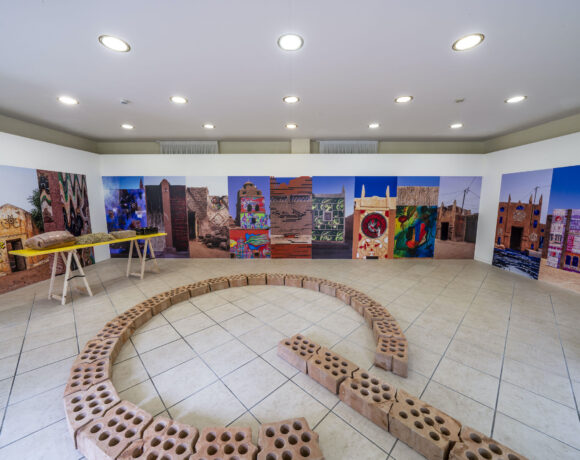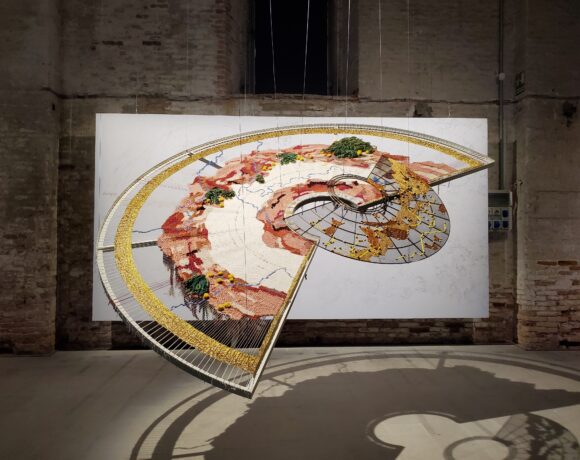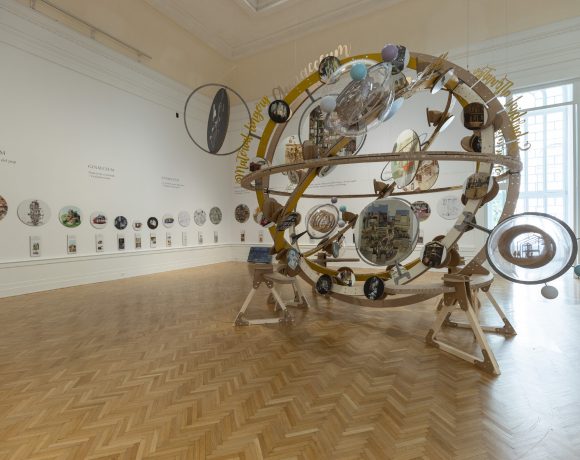«The most important thing is not to build well but to know how most people live»[1] (Lina Bo Bardi)
Piazza Abbiategrasso and its chirping crickets and motors, the bustling and super-guarded Carrefour, the backpacks coming out of the green subway, and a huge 6400-square-meter empty amphitheater that residents have always called La Piana. «It is an elevated pedestrian area hidden among 1970s multifunctional complexes, barracks and large supermarkets»[2], one of those places, described, among many, by La Pietra, that the lack of internal discipline and the – not only metaphorical – exclusion from the maps of urban planning have made «physically and mentally available, places with the possibility of developing creativity»[3], open to take on different conditions, roles and states to host creative appropriation practices: the moped races of the neighborhood kids, the projects of the Atir theater company that, until 2007, had managed the spaces of Teatro Ringhiera, markets, performances and workshops.

Teatro Ringhiera, photo Rebecca Bridgwater, courtesy ZUMMAUT
The latest among these projects involves the collective ZUMMAUT (Milan, 2021) [https://www.instagram.com/zummaut], which, rather than industrial design and feasibility, is concerned with tracing new ways of living: «We collect daily cues and thoughts with the sole purpose of unearthing and pursuing new habits of living domestic and urban space […] in order to talk about something concrete, problems, contemporary issues and situations that are somehow close to us»[4]. The New Habits[5] of the centripetal collective formed by Luca Magistrali, Alberto Massara, Marco Merafina, Alice Platania and Giacomo Quinland had already grafted themselves onto Milan’s gray grid. The Seduta Infinita, created on the occasion of Guiltless Plastic (Palazzo Brandello, Milan, 2022), curated by Rossana Orlandi, thought of a creative redistribution of the plastic produced by the Milanese metropolis, constructing a bench, line, track that would cross and cover the city like a strip of fresh paint: «By recycling every single gram of the plastic used in 5 days in Milan, a 1.638 km Seduta Infinita could be produced»[6].

La Piana, photo Rebecca Bridgwater, courtesy ZUMMAUT
For the Ostile exhibition, ZUMMAUT restarts again from an urban seat, which this time is not endless, but strong in its tangibility and inhospitality: the arched benches of Piazzale Gabrio Piola. Like so many recently renovated and redeveloped squares, Gabrio Piola has been subject to that urban improvement whose flaws Andrea Staid traces with an ethnographic research on informal and self-managed living in Milan[7]: a constellation of interventions that have transformed the former Milanese hinterland and postwar working-class neighborhoods into residential complexes, which, under the veneer of sustainable architecture and energy efficiency, have proven to be absolutely inaccessible to most and take away spaces for the area’s original inhabitants[8]. Traditional and useful benches are replaced by hostile, defensive, inhospitable architecture designed to prevent behavior deemed vandalistic or anti-social, which may harm the order and public decorum of the renovated neighborhood-showcase. Among these unpleasant architectures we find devices-such as bunting and spikes-that speak of a city homogenized around the dictates of decorum, which, often, cannot be responded to.

Le panchine arcuate di Piazzale Gabrio Piola, photo Rebecca Bridgwater, courtesy ZUMMAUT
In the naval space facing La Piana, six panels at human height recount, with some photographs by Rebecca Bridgwater, the square before and after the installation of Simbionte (2023), an EVA polyurethane foam structure with elliptical arches custom-made starting from the dimensions of Piola’s benches. Looking at it and sitting on it, it is clear that the collective’s intent is not to address an issue of functionality or comfort (in fact, it is not necessarily the case that ZUMMAUT’s structure is more or less comfortable than the pre-existing bench), but to place a hat and visual emphasis on discomfort. The grotesque slipping and sliding of the structure on the bench, the playful sitting with open legs, the creative constitution of drawings and small tracings each time one sits on the polyurethane, are just some of those improvisations that, if not allowed by decorum, are put almost on an enunciative pedestal in the collective’s work. Simbionte seems to allow a series of unintentional, naïve, individual, continuous profanations that, occur, unknowingly, simply by experiencing public space, akin to those described by Walter Benjamin and Asja Lacis in Napoli Porosa[9] (1925) where the ruins and multilayered buildings of the Neapolitan city were presented as spaces for the citizenry to create an improvised theater.

ZUMMAUT, Simbionte, 2023, photo Rebecca Bridgwater, courtesy ZUMMAUT
Polyurethane foam, moreover, has characterized many of the experiments traceable to Italian design. Certainly various Gufram seats come to mind, such Divano Bocca or Capitello (Studio65), which, although they hide trickster allusions to the entertainment society, have been captured, chewed up and rejected by it as luxury objects inaccessible to most. Here I allude, instead, to a series of children’s toys that Enzo Mari made first in wood and then precisely in polyurethane such as Sedici Animali, Gioco delle favole (1957) and Living (1976). The latter was created in response to a competition that asked for reasoning on the theme of living through eight groups of ten cards of different colors: the first group defines the profession of the landlord, the second the type of dwelling (possibilities ranged from villas to boats), then the city and what infrastructure surrounds the house (a theater, a supermarket, a railroad, the subway). And again, what the landlord’s friendships are and his object of desire: all elements that, according to Mari, would have helped children think about dwelling in relation to the material and social conditions that determine and inform it: «One of the first stupid things that is taught in schools is that plans are made on the basis of theory. But when you read the History of Science and the History of Art you see that projects always arise from discovery […] The function of play is to put children in the condition of discovery»[10].

ZUMMAUT, Simbionte, sketch, 2023, courtesy ZUMMAUT
Invited by Stefano Boeri, Mari proposed Living to an architecture class at the Milan Polytechnic to push students, in designing «thinking about real people and not abstract and trivial statistics: the middle class, the working class, those who earn a million pounds a month versus those who earn only five». «Thinking about the reality of human relationships»[11]: for the designer, only by taking these variables into consideration it is possible to attempt solutions which do justice to people’s lives «Play as an organ of profanation is everywhere in decay» wrote Agamben in 2005 concluding that «returning play to its purely profane vocation is a political task»[12]. In Profanazioni the Italian philosopher traces, first in religious rites, then in consumption, an impossibility of using the object-fetish, which makes its meaning impossible to be returned to common use, that of humans. The same discourse can be applied to the “consumption” of urban space, which makes metropolises fetishes and showcases available to a homogenizing mass tourism, and which has relegated cities such as Milan, Paris, Venice to a monodic identity, the most sellable one, hiding any form of plurality. Sacrilegious, for Agamben, was every act that violated this unavailability.

Talk w/ Meletios Meletiou, sabato 4 febbraio, in occasione dell’opening di Ostile, a cura di Maria Carla Forina, Spazi Ex Teatro Ringhiera, photo Rebecca Bridgwater, courtesy ZUMMAUT
Curator Maria Carla Forina, therefore, likens these practices to the parasitic model of biology, inspired by the P.A.R.A.S.I.T.E Museum of Contemporary Art by Tadej Pogačar (Ljubljana, 1960)[13]: a «kind of temporary colonization», which «occupied for a certain period of time institutions that embodied dominant and normative narratives»[14], where mockery and performativity displayed unprecedented ways of relating, on the one hand, to the paradigms of the modernist museum, and, on the other pole, to the systemic constraints and exclusions of public spacesi. «By applying this discourse to contemporary urban space, we consider parasitic all those housing strategies of resistance from below and social and community practices of subversion that act on the functioning of the organism-city by altering its immanent state»[15] elaborates Forina.

Ostile, a cura di Maria Carla Forina, Spazi Ex Teatro Ringhiera, Milano, 4 – 19 febbraio 2023, installation view, photo Rebecca Bridgwater, courtesy ZUMMAUT
Tracing these practices of urban parasitism does not even require looking too far back to art books, which is why I have decided to refrain in this text from tracing already obvious historicisms that would lead us back to, for example, Martha Rosler’s “If You Lived Here…” or Michael Rakowitz’s paraSITE. My invitation is to step outside the spaces of the former Teatro Ringhiera and walk backwards to the center, to Piazza Ventiquattro Maggio; to look left and right, under the long, neurotic arcades of Via Montegani, at the entrances of the banks, in search of arrangements of tents and pulled ropes, mattresses and piled blankets, that arise directly from housing discomfort. Also, recompose the path of Isola Art Center in Milan, the Blocchi Metropolitani in Rome and the Parisian banlieue. Hostile calls for questioning and restarting from these stories, for an urbanism based on the material and spiritual conditions of all city dwellers, on lived experience; which considers, in short, “how most people live”.
Alessia Baranello
Info:
ZUMMAUT; Ostile
4.02.23-19.02.23
curated by Maria Carla Forina
Spazi Ex Teatro Ringhiera
via Pietro Boifava 17, 20142, Milano
[1]L. Semerani, A. Gallo, Lina Bo Bardi. Il diritto al brutto e il SESC-Fàbrica da Pompéia. Edizione illustrata, Napoli: Clean Edizioni, 2012.
[2] From the press release of Ostile
[3] “Nel cammino dal centro alla periferia ho provato a lasciare alle spalle “l’eccesso” causato dalla moltiplicazione delle immagini (dei suoni, degli odori, delle persone…) per avvicinarmi lentamente ad una realtà più rarefatta. Un percorso che, verso la periferia, mi ha fatto scoprire momenti di rara bellezza, legati alla sorpresa: vedere cioè come i cosiddetti “non luoghi” (spazi che il sistema non aveva ancora reso “efficienti”) fossero invece spazi disponibili dal punto di vista fisico e mentale, luoghi con la possibilità di sviluppare creatività” (U. La Pietra, Istruzioni per abitare la città, Clac e Viaindustriae publishing, 2018, p. 31)
[4] S. Rossetti, ZUMMAUT, il collettivo di designer che riflette sull’architettura ostile, 3 febbraio 2023, www.artribune.com/progettazione/design
[5] New Habits is the name that the collective has given to the research, carried out for two years now, on the theme of living
[6] https://zummaut.com
[7] A. Staid, Abitare illegale, Milieu edizioni, Milano 2017
[8] “Queste zone abitate formalmente e informalmente per molti anni da classi povere sono state sottoposte a un restauro e a un miglioramento urbano, non per chi già ci viveva ma per far affluire nuovi abitanti ad alto reddito per poi espellere i vecchi abitanti a basso reddito, i quali con l’innalzamento dei prezzi non possono più permettersi di risiedervi” (A. Staid, Abitare illegale, Milano: Milieu edizioni, 2017, p. 32)
[9] Walter Benjamin, Asja Lacis, Napoli porosa, a cura di E. Cicchini, Dante & Descartes, 2020.
[10] (a cura di) H. U. Obrist, F. Giacomelli, Enzo Mari curated by Hans Ulrich Obrist con Francesca Giacomelli [catalogo della mostra], Milano: Electa, 2020, pp. 52-53
[11] ivi., pp. 54-55
[12] G. Agamben, Elogio della profanazione in Profanazione, Roma: Edizioni Nottetempo, 2005, pp. 87-88, https://www.sguardisulledifferenze.eu/wordpress2/wp-content/uploads/2017/03/G.-Agamben-Elogio-della-profanazione.pdf
[13] Tadej Pogačar is a Slovenian artist, writer, curator and educator who began working in the 1990s in the former Yugoslavia. He bases his practice on a relational art, which investigates social, political and cultural problems with urban and participatory interventions, which especially concern his country
[14] Baranello, M. C. Forina, Istruzioni per un Nuovo Parassitismo. Pratiche artistiche e curatoriali che ripensano le istituzioni museali, in Machina, 7/01/2022, https://www.machina-deriveapprodi.com/post/istruzioni-per-un-nuovo-parassitismo
[15] From conversations with the curator Maria Carla Forina

Alessia Baranello (Campobasso, 1998) is an independent curator. Her research focuses on the link between visual arts and historical, social and economic issues, with a focus on experimental exhibition practices. She write about contemporary art, cultural and memory studies. She was co-curator of the artist residency Uva Program (Nizza Monferrato, July 2022) and is co-founder of the curatorial duo Scania Trasporti.






NO COMMENT